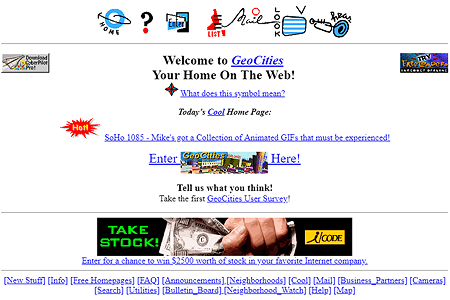1990
February
19th
Photoshop 1.0. The program was only available for the Macintosh platform (Mac System 6.0.3) and required at least 2 MB of RAM and an 8 MHz processor for its operation.
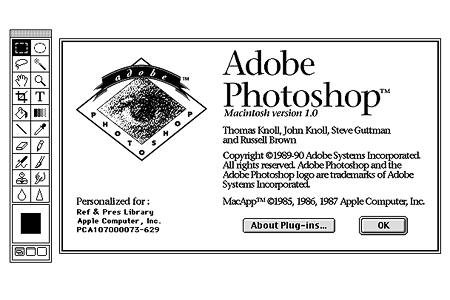
1990
September
10th
Archie. The search engine enabled its users to find and download specific files on the Internet by indexing files stored on public FTP servers. Its name comes from the word archive, dropping the letter v. Archie is often considered to be the world’s first Internet search engine ever. At the end of the 1990s, the search engine gradually ceased to exist.
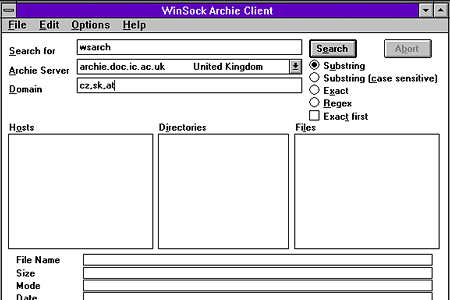
1990
December
25th
Tim Berners-Lee created the world’s first web browser, called WorldWideWeb. The browser was also a simple WYSIWYG (What You See Is What You Get) editor for editing web pages. WorldWideWeb only worked with the NeXTStep operating system. Later, the browser was renamed Nexus to avoid confusion with the World Wide Web (WWW).
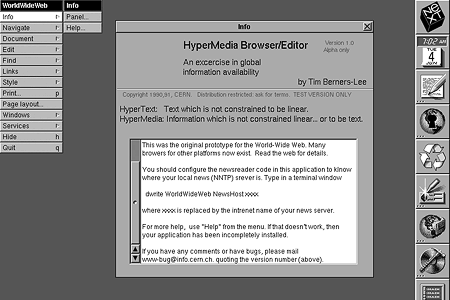
1991
April
Gopher system was created at the University of Minnesota as a text-based system that used the hierarchical menu structure for navigation. It was a system working on a client-server basis. Gopher integrated the services of FTP, Usenet, Veronica, Archie and WAIS. Since 1996, Gopher has been on a decline and is currently used very rarely.
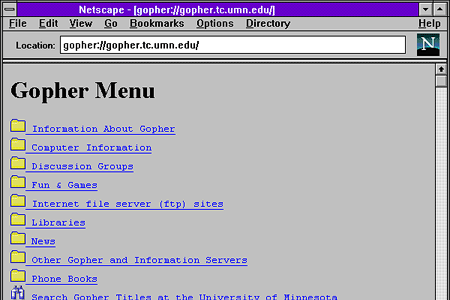
1991
May
14th
Line Mode Browser (The Libwww Line Mode Browser). This was the second browser ever made for the World Wide Web.
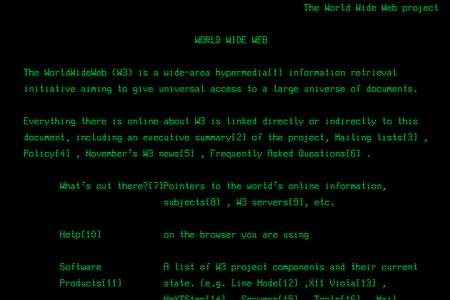
1991
August
Tim Berners-Lee compiled the first index of websites called the WWW Virtual Library. The hyperlinks were organized into a tree of categories and subcategories depending on the individual fields of human activity or interest.
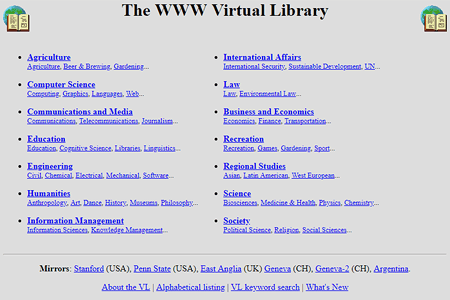
1991
August
6th
Tim Berners-Lee launched the world’s first website at http://info.cern.ch/hypertext/WWW/TheProject.html. Unfortunately, the original website has not been preserved until today and the link shows only its 1992 copy.
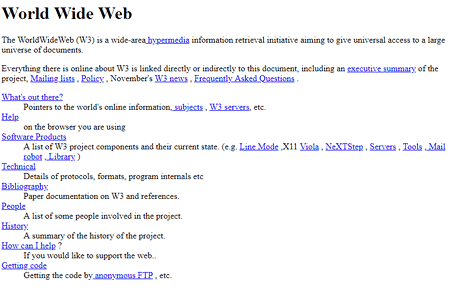
1991
October
29th
Tim Berners-Lee, published a document entitled HTML Tags. The document contained a description of the first 18 HTML tags: <title>, <nextid>, <a>, <isindex>, <plaintext>, <listing>, <p>, <h1>…<h6>, <address>, <hp1>, <hp2>…, <dl>, <dt>, <dd>, <ul>, <li>,<menu> and <dir>. The design of the first version of HTML language was influenced by the SGML universal markup language.
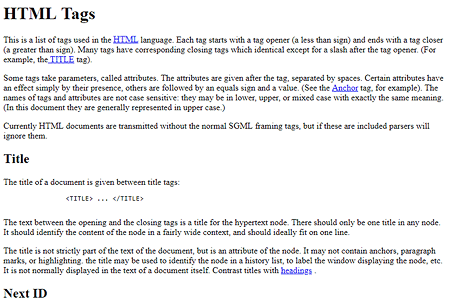
1991
November
Hypertext Transfer Protocol (HTTP) is an Internet protocol designed to exchange hypertext documents (images, websites, etc.) between the server and the web browser. The first protocol design, later called HTTP v0.9, was created by Tim Berners-Lee as part of the WWW service specification. The HTTP v0.9 version was extremely simple, using only the GET method with one parameter, i.e. the name of the requested document.
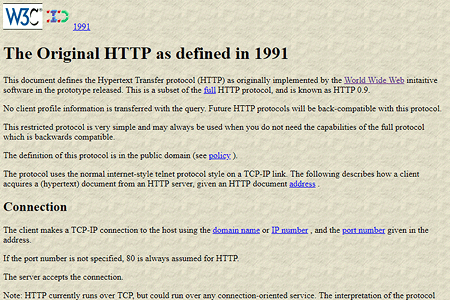
1991
December
6th
Paul Kunz launched the first web server in the USA in the Stanford Linear Accelerator Center (SLAC). Paul Kunz was inspired by the World Wide Web project directly from its creator Tim Berners-Lee, whom he met in person at the CERN Swiss Research Center in September of the same year.
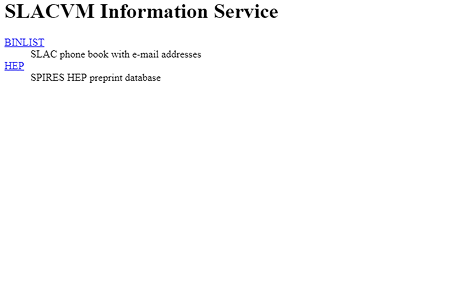
1992
March
9th
Pei-Yuan Wei developed the ViolaWWW browser for Unix while he was working at the University of California at Berkeley. ViolaWWW was the first browser to support scripting, table rendering and forms. The browser also contained a simple stylesheet to define the website’s visual appearance. In March 1994, Pei-Yuan Wei released its last version, the lone developer no longer being able to keep up with the Mosaic Communications Corporation, which launched the Mosaic Netscape 0.9 browser the same year.
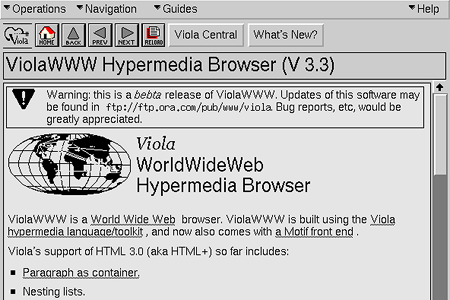
1992
April
12th
BBEdit freeware HTML and text editor. The editor was designed for the Macintosh platform.
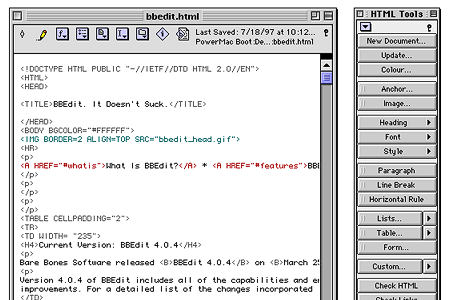
1992
July
18th
Les Horribles Cernettes (The Horrible CERN Girls) onto the info.cern.ch website. This photo became one of the first images to be published on the World Wide Web.

1992
November
search engine called Veronica at the University of Nevada. The search engine was used to browse and index information in Gopher menu items. The name Veronica is an acronym for “Very Easy Rodent-Oriented Net-wide Index to Computer Archives”.
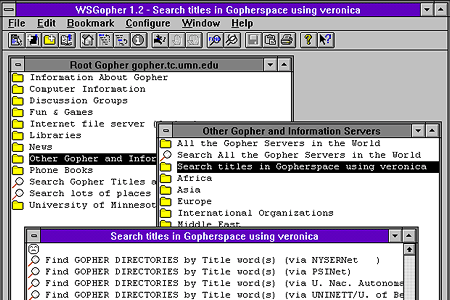
1993
April
22nd
Marc Andreessen and Eric Bina from the University of Illinois programmed one of the first web browsers with a graphical interface.
Mosaic (full name NCSA Mosaic) worked on multiple platforms including Windows and was available for free, thanks to which it gained worldwide popularity among the general public shortly after being launched. Its development officially ended on January 7, 1997.
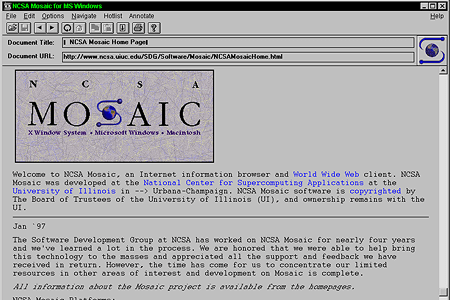
1993
November
30th
Aliweb search engine (Archie-Like Indexing in the Web) designed specifically for the World Wide Web service. In May 1994, Aliweb was introduced to the public at the first international WWW conference at the CERN Research Center in Geneva.
Aliweb did not have a web crawler to search and index web pages. Sites were added to the database upon request from users using special files that contained their exact description and location.
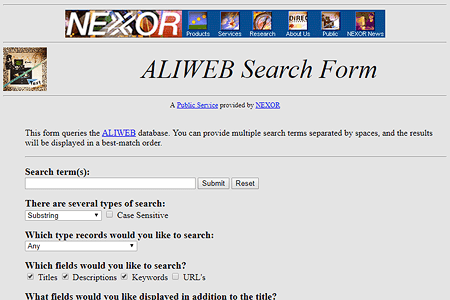
1994
January
Jerry Yang and David Filo, two Ph.D. students from Stanford University, created a list of websites entitled “Jerry and David’s Guide to the World Wide Web.” In March 1994, the portal was renamed Yahoo! and the yahoo.com domain was registered on January 18, 1995. Yahoo is an acronym for “Yet Another Hierarchical Officious Oracle”. In March 1995, the Yahoo! search engine was launched as part of the portal.
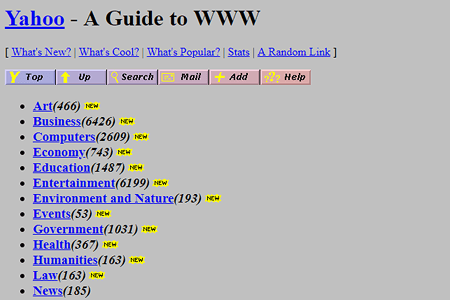
1994
July
3rd
Martijn Koster presented the robots.txt standard (Robots exclusion standard or Robots exclusion protocol) as part of the W3C www-talk mailing list. The rules defined in the robots.txt file are used to prevent or restrict indexing robots from accessing a website.
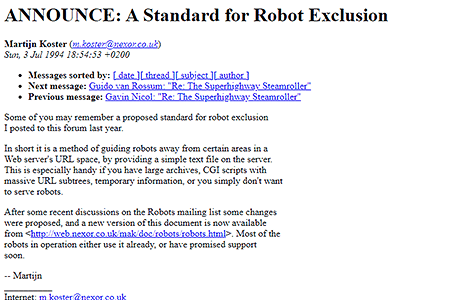
1994
July
13th
first version of an online HTML validator. The tool served to check the validity of documents, i.e. compare the document code with valid standards and look for potential errors.
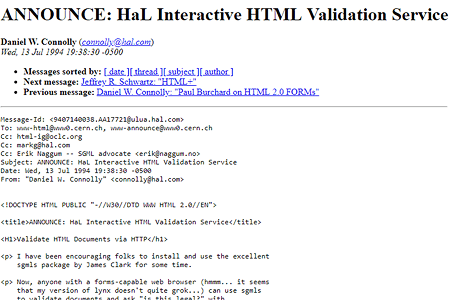
1994
October
1st
Tim Berners-Lee founded an international organization called World Wide Web Consortium (W3C). The main objective of the consortium is the development of Web standards for the World Wide Web (WWW). For example, W3C developed standards for HTML, XHML, XML, or CSS markup languages. Another aim of the organization is education and development of Web Accessibility Rules (WCAG).
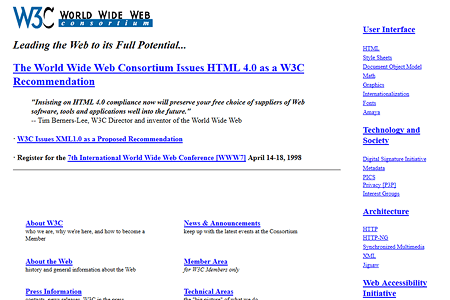
1994
October
13th
Mosaic Netscape 0.9, the first one in a series of browsers, called Netscape Navigator in the subsequent versions. Shortly after being released, Mosaic Netscape 0.9 and Netscape Navigator 1.0 (released on December 15, 1994) became widely popular and, within a few months, assumed a dominant position on the market.

1994
October
27th
the first web banner in Internet history on the HotWired magazine website. The first web banner in the world was 476×56 px and contained only the phrase “Have You Ever Clicked Your Mouse Right Here?”. Clicking on the banner led to a virtual tour of world galleries and museums.

1994
November
GeoCities in 1995. The original concept of the service was to create a virtual community of websites organized in “internet cities”.
2 MB of free disk space. In 1999, GeoCities was bought by Yahoo! and ten years later, on October 26, 2009, Yahoo! definitively terminated the GeoCities service.
